At the start of every year, Nico selects a few potential backpacking trips across the US and schedules reminders to enter lotteries for permits. In the midst of the pandemic, without an end in sight, 2021 was no different. We were looking for a challenging but not overly strenuous hike as Brittany had gone through knee surgery in early February. We decided to shoot for a Yosemite overnight wilderness permit and added the Half Dome cables to the reservation. This approach apparently has better odds of snagging one of the 300 highly-coveted, daily permits to access the cables. We entered the lottery daily for about a week until we were successful and got a reservation for early August.

Yosemite is a 5 hour drive from LA with no traffic. But leaving on a Thursday afternoon guarantees an additional hour just to get out of the city, so we booked a hotel in the national park gateway town of Oakhurst the night before the hike. After stocking up on supplies in the morning, we headed into the park, stopping along the way for some pictures at the famous tunnel view of the Yosemite Valley. Although we’ve spent a lot of time in the Sierras, this was Brittany’s first time in Yosemite.
We picked up our permits at the ranger station and headed towards the trailhead near Curry Village. Despite caps on the number of visitors, the park was still a zoo, and since shuttles weren’t running, we had almost a mile just to get to the trailhead. We ascended up the concrete path of the Mist Trail with hundreds of our best friends bringing along strollers while sporting jeans and flip flops. On our first crossing of the Merced River, we could see Vernal Falls further up. The path got steeper and turned into steps cut into stone as we were approaching the top of the falls. At certain times in the year with strong wind and high river flow, this aptly named trail can become quite damp and hikers will be soaked through. However, this isn’t what we experienced, and the mid-afternoon heat, infrequent shady spots and lugging our packs made this part quite challenging!
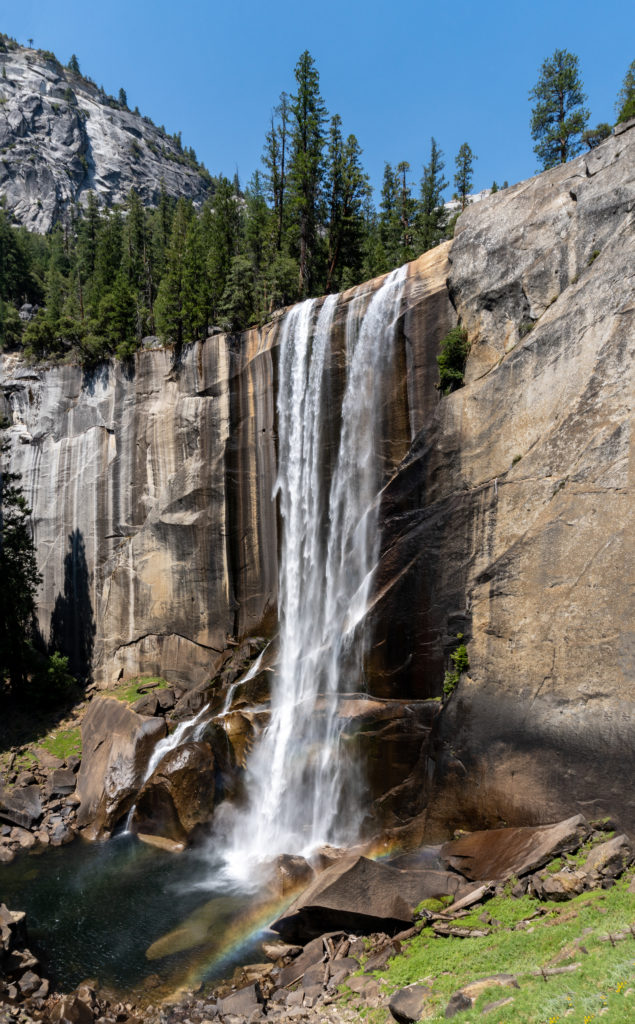
Continuing on, the crowds thinned out substantially. Occasionally, we were stopped by Half Dome day hikers to ask where we would be camping; in turn, they shared details of their day hike itineraries which often included starting before 3 AM. Hearing their stories, feeling the heat and having already hiked a ton of elevation, we were pleased with our decision to camp prior to summiting and not conquering it all in one day. Shortly after Nevada Falls, we finally felt like we were in the wilderness and not constantly passing other hikers. It wasn’t long before the path flattened out in Little Yosemite Valley, and we arrived at our campground, after about five miles of hiking.
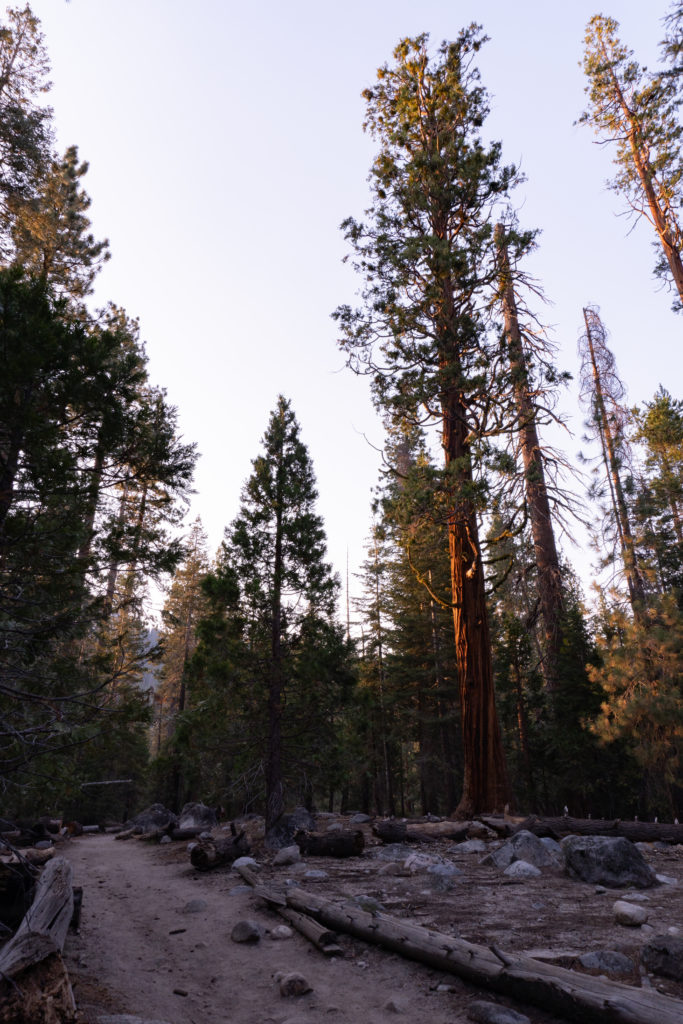
The camping area is pretty heavily trafficked. To reduce impact, it is limited by a boundary that makes it a little condensed with neighboring tents very close. There are pit toilets nearby that are actually fairly nice and keep the surrounding area clean and free from improperly buried waste. There are also storage lockers for your food and other smelly items (chapstick, sunscreen, etc.) that should be used if not using a bear canister. There is no filtered running water at the site so bringing a filter is essential. It’s probably not a bad idea for day hikers to do so as well – we were asked by a handful if there was a spigot nearby (there wasn’t). Heading up the trail to Mist Falls, there a several posted warnings (and rangers!) with recommendations for the amount of water each person should carry, as dehydration is the top reason for wilderness rescues. We saw a number of visitors with only a disposable water bottle.
The plan for the next day was to hit the trail by 5 AM in order to avoid crowds at the cables. We had read stories about traffic jams caused by people with improper equipment or having panic attacks, so we wanted to avoid the 9-noon rush hour. We left the tent, grabbed our day pack that was stuffed with granola bars and sunscreen, and started hiking with our headlamps in the dark. We were approaching the treeline right around first light, and got a glimpse of the awesome views of the valley below. The hike got steeper when we got to subdome, the part just beneath the final climb, with a section just on granite that made it a little hard to navigate the actual trail.
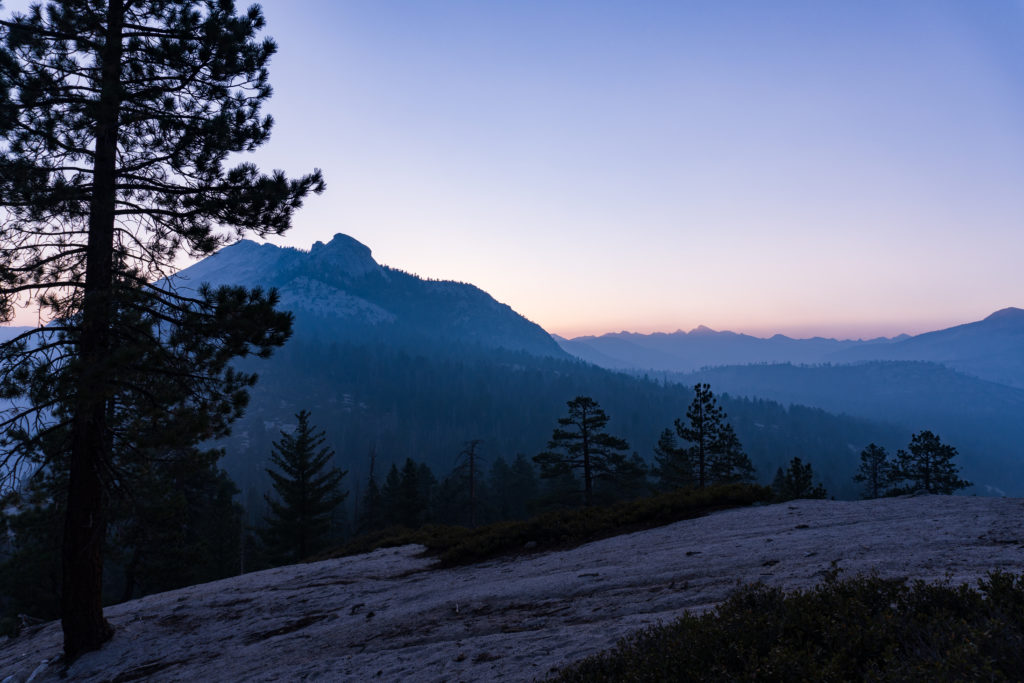
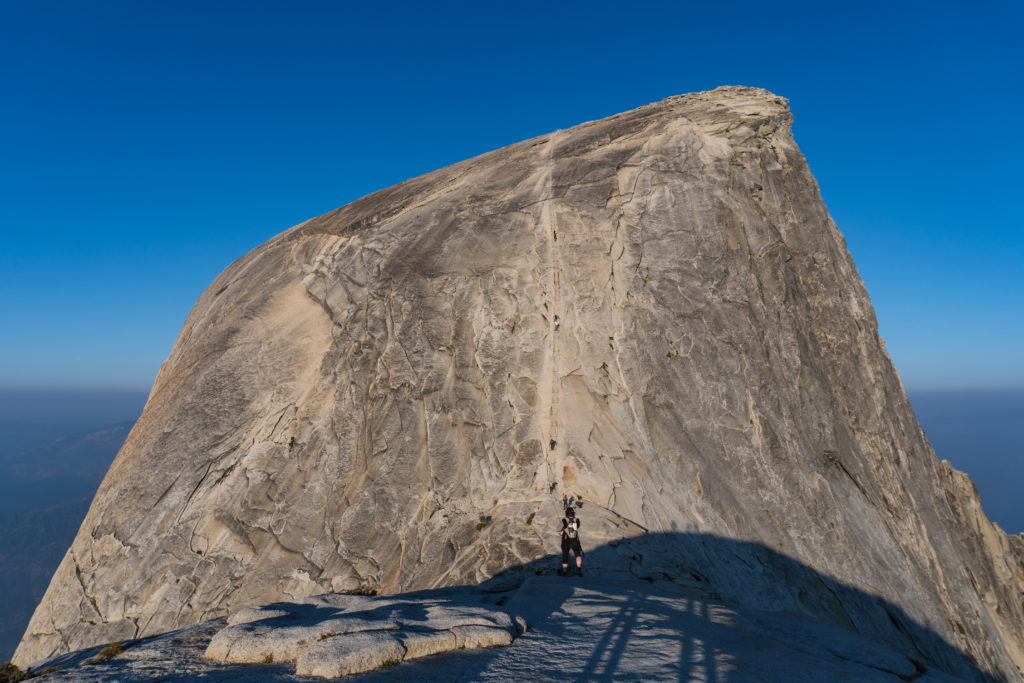
The cable section was a little daunting at first as it juts almost directly up and you can’t see where it ends when standing at the bottom. We stowed our trekking poles in the backpack and put on our gardening gloves. Waking up early paid off! We got to ascend by ourselves and only had to pass by two people who were descending. We were a bit nervous about the climb at first but made steady progress up without looking down. We were able to use both cables and stopped regularly at the wooden planks to take brief breaks before continuing. The wooden planks are attached to the metal poles that secure the cables, but can be a bit wobbly. The granite can be slick on steep areas, with constant foot traffic due to its popularity, so proper hiking shoes are highly recommended. It took us about 15 minutes to get to the top so we summitted around 7 AM, just after sunrise. Again, we were grateful that waking up was so rewarding because there were only two other groups enjoying the quiet morning atop one of the most well-known rock formations in the US.
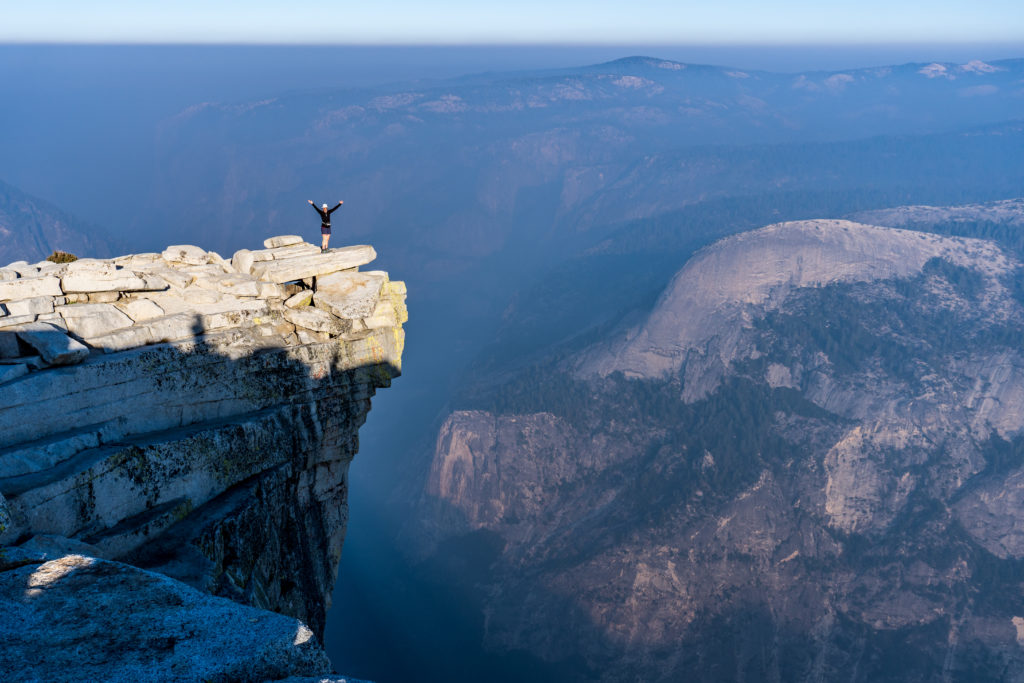
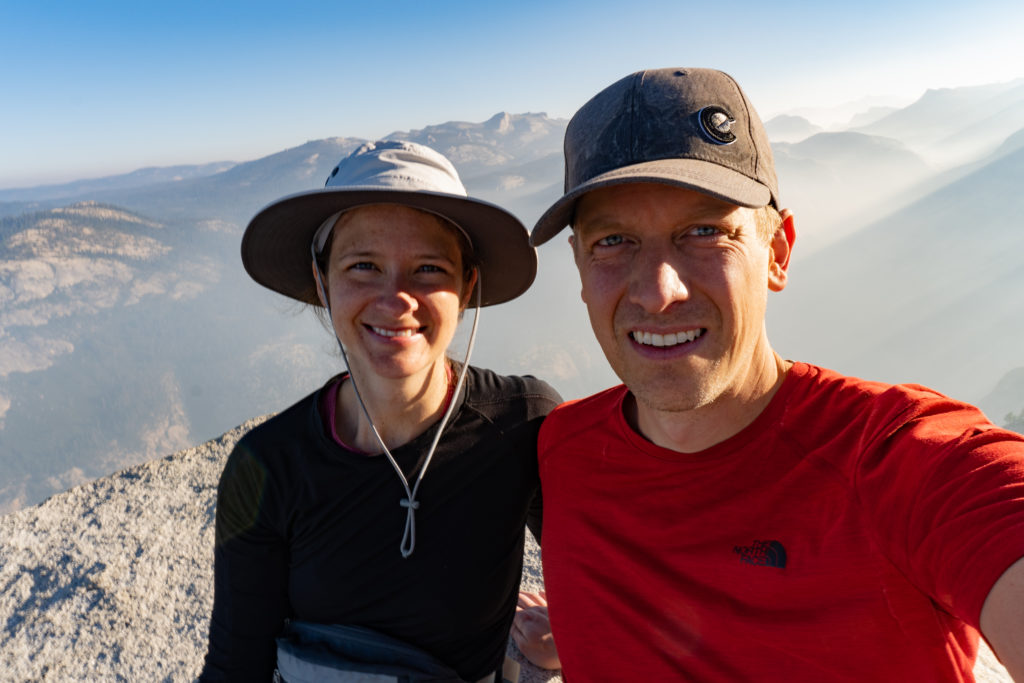
The views from the top were spectacular. Nearby wildfires had created hazy conditions in the valley which limited the visibility, but it resulted in pretty cool effects for photos such as the sunrays. And the early morning made for long shadows from the surrounding peaks that jutted into the haze.
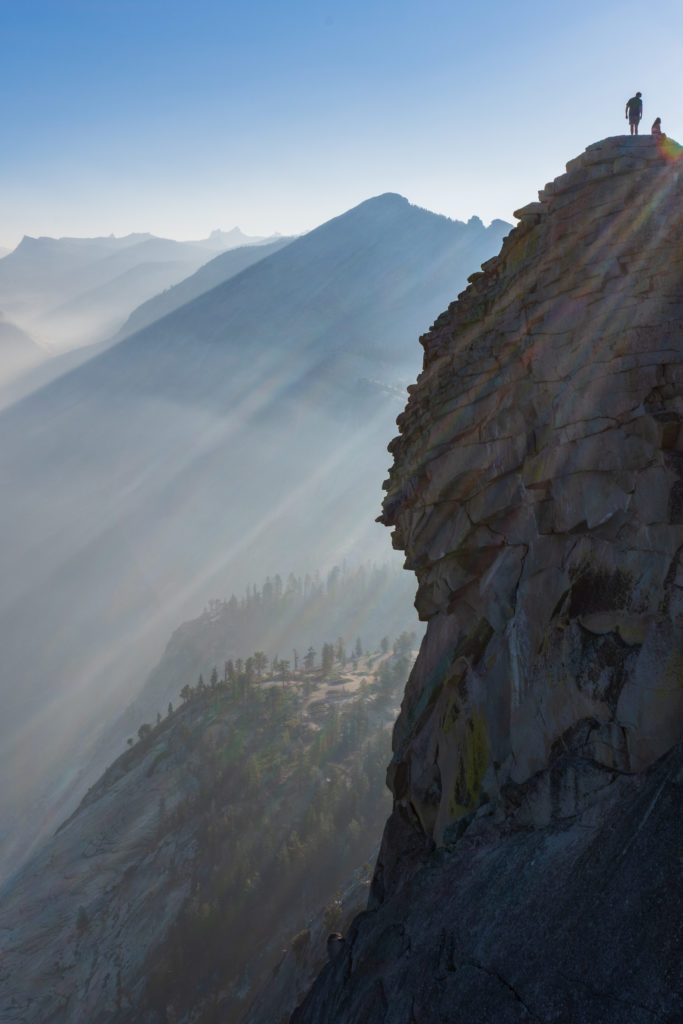
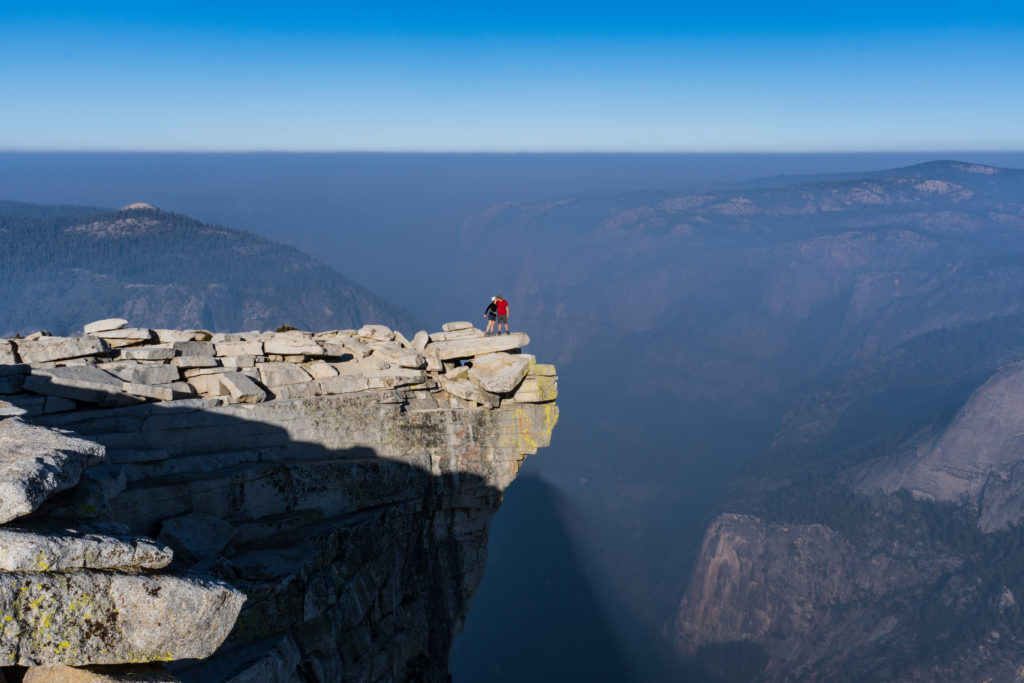
The climb down was also, thankfully, uneventful. We descended the cables backwards very easily and only passed a few other people, including a family with two fairly young kids. We were told that several people opt to use a harness, but we felt that it wasn’t necessary in these conditions. One party behind us used one and it took them much longer to descend. As we returned to the subdome around 8 AM, it was already starting to get busier and there was a ranger checking permits and IDs. They take the permit process seriously and will turn away anyone who doesn’t have a permit and ID. We passed two hikers that were turned away for not having a permit, so only attempt if you’ve got one!
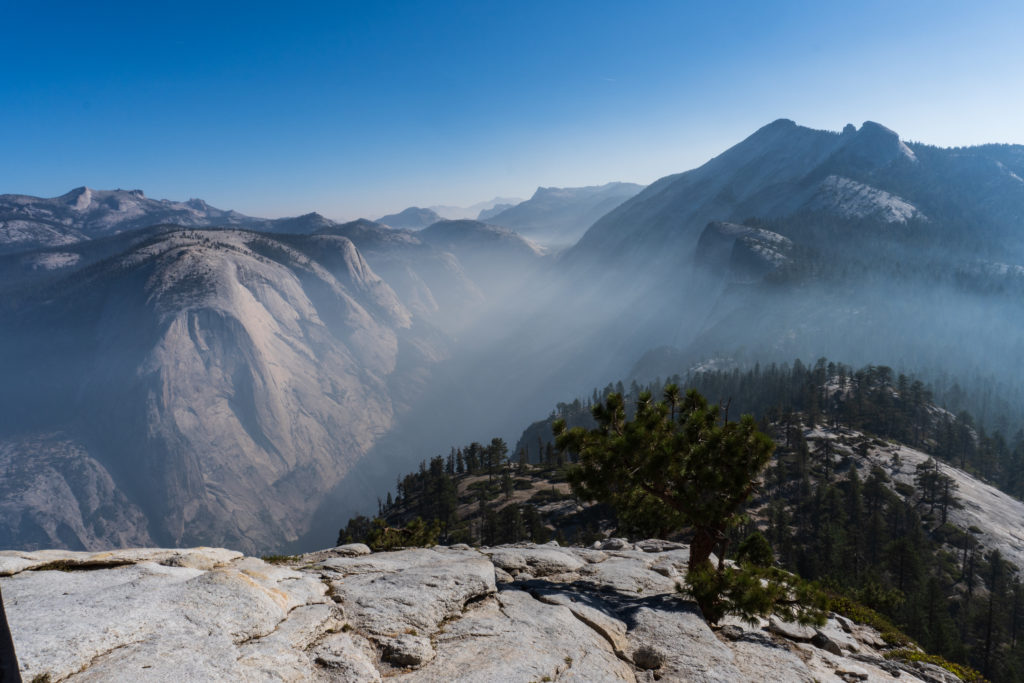
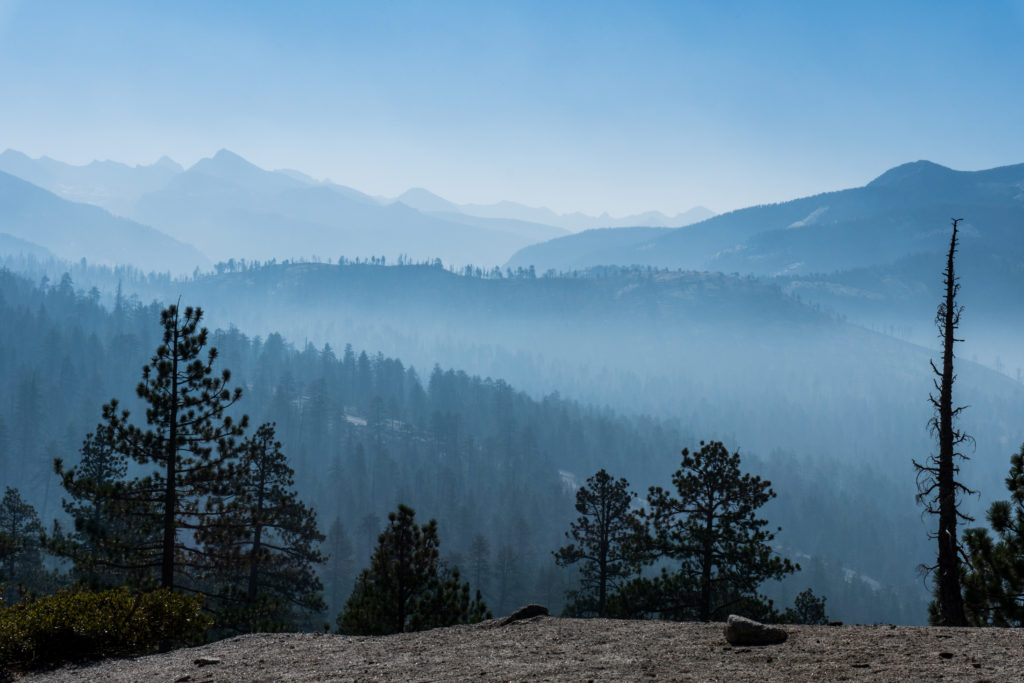
We got back to our tent around 10 AM and took a short break before packing it up to continue our descent. We opted for the sightly longer John Muir Trail over the shorter, but steeper, Mist Trail to make it easier on our knees. It was a very scenic hike that allowed us to see from afar where we had hiked the day before. It is less crowded than Mist Trail, but it was still heavily trafficked by day hikers. With the intense heat and growing number of people as we got closer to the trailhead, we were ready to be done. We arrived back at our car in the early afternoon, after about 18 miles of total hiking.
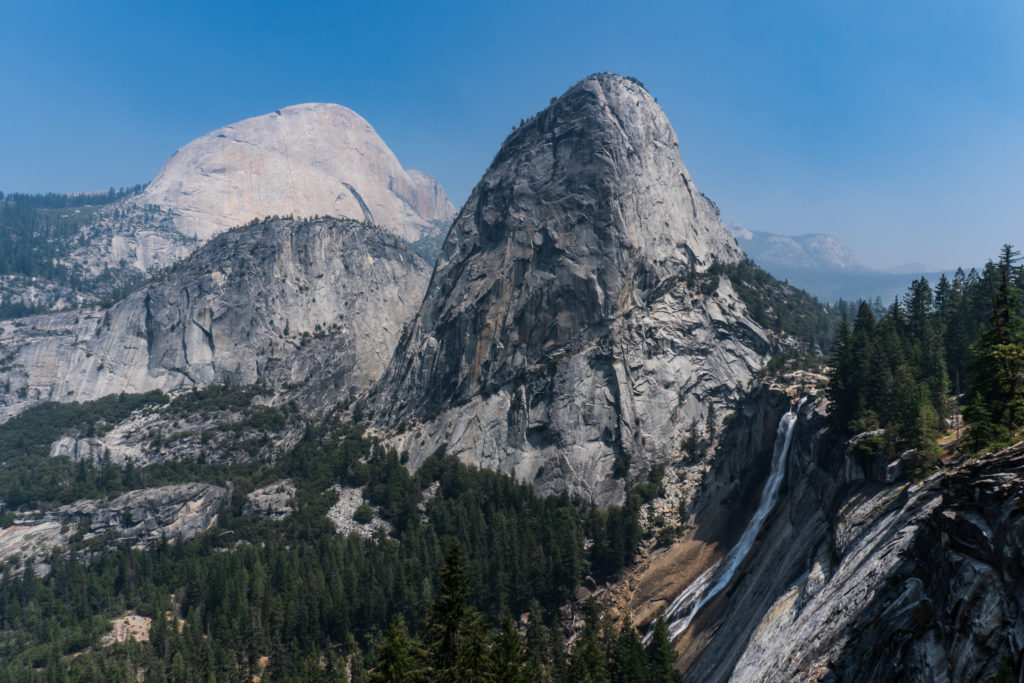
We highly recommend doing this as an overnight trip. We were able to take it easy to enjoy the scenery on the way up to camp, felt well rested the next day, and were able to summit early without the crowds. On our way in, a ranger told us we need to do Clouds Rest next, so we’ll be back soon for an overnight trip in Tulomne Meadows!
